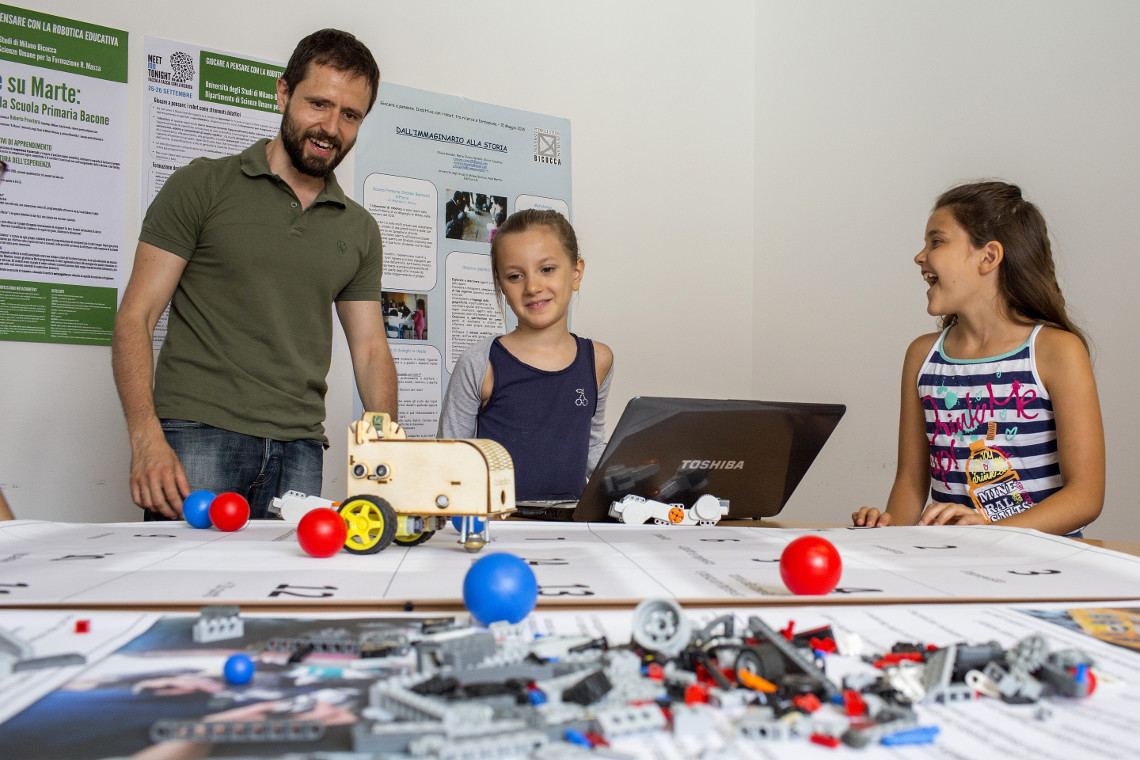What are robots for in the classroom
You learn by building: this is nothing new. And what about with new technologies?

You learn by building: this is not a new concept. All of us, as children, have tried at least once to make more or less imaginative objects (castles, trains or kites). We looked for the necessary materials, designed the construction of the object, cut and glued pieces of cardboard and finally put it all together only to discover that something was wrong. So we went looking for our mistakes and tried to correct them. And in many cases we managed to achieve what we wanted, because we really wanted it.
By doing all of this, we were learning a lot. We were learning how to cut and decorate things, how to design a work plan and above all we were thinking how to make what we wanted and how to fix our mistakes.
Robots – at least ones like CoderBot – are for building. With a particularity. Compared to cardboard, Meccano or LEGO, they allow you to build something extraordinary: a behavior.
Let’s think about CoderBot. It can roll on its wheels like a small vehicle and has sensors of various types.
Through a simple programming language, which is learned without great difficulty by relatively young children (6 years), CoderBot can be asked to move in particular ways depending on what is perceived by the sensors.
You can ask CoderBot to walk around the room and steer when there is some object nearby, to take refuge in the dark areas of the house like cockroaches do, or to look for the light like moths do.
You can ask CoderBot to say “Apple!” when he sees an apple or chasing a red ball. You can even ask one CoderBot to tell another CoderBot what to do.
All this can be done at home, alone, or in the classroom, working with teachers and classmates.
What do you learn by programming a CoderBot? Depends. If it is proposed as a didactic tool for school activities (as often happens), the lion’s share goes to the teacher: the activities he proposes, the way he organizes group work and above all the moments of reflection - i.e. those in which the children all reflect together on what they are doing and why, on what they have learned and how they have learned it.
In short, the question depends on how CoderBot is used in the classroom: the Bicocca Department of Education Sciences, with its RobotiCSS Lab, conducts many experimental research activities on this too.
The fact remains that, so far, many teachers have used CoderBot in their classes with great satisfaction for them and for the children.
In many cases the goal of the teachers was to stimulate children to think, with all that this word means: in fact, to plan behavior through CoderBot you need to think a lot.
We need to make predictions, experiment, give explanations, decide which set of commands gives the robot the “logic” we want to see in its behavior.
In the robo-ethology studies conducted by the RobotiCSS Lab and published in the IEEE Robotics and Automation Magazine, children did not have to program the CoderBot but find out how it was programmed starting from the observation of his own behavior. Discovery, theorizing, experimentation, observation: child scientists grappling with a robotic pet.
In other cases the goal was more disciplinary. Geography routes were made, in which the children had to reconstruct the structure of a territory on the basis of “subjective” images acquired by CoderBot, such as in rovers on Mars, i.e. the small probes designed to move on the surface of other planets.
Pathways have been developed that aimed at the development of mathematical, geometric and artistic skills and even linguistics. The creativity of teachers is endless and CoderBot, with its camera, its computer vision algorithms and its ease of programming, can only fuel it.
Pubblicato il 15/12/2017 da CoderBot news